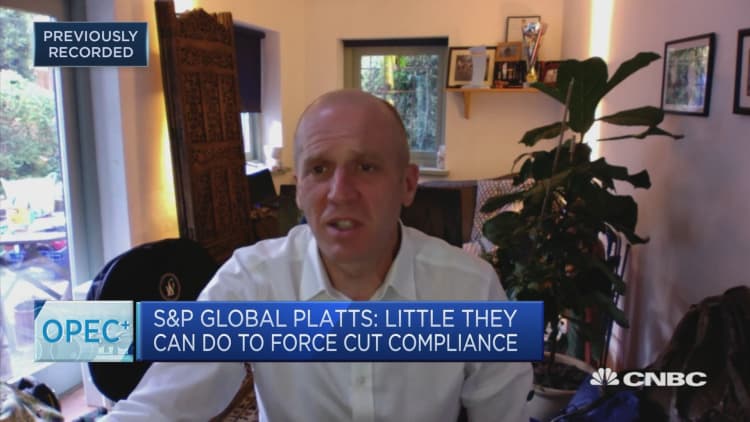Bottom-scraping interest rates in 2020 were a major factor fueling a stock market that, after plummeting in March from the pandemic, rallied to post a banner year.
Low interest rates also vexed investors seeking yield from bonds purchased to diversify portfolios and reduce risk. But while bond yields likely will remain paltry in 2021, much higher yields are available from alternative fixed-income investments that individual investors typically overlook.
Many market sectors are poised to continue growth spurred by the Fed's rate cut last spring — a move whose effectiveness shouldn't have been surprising, given its history of success. Along with low rates, conditions pointing to equity growth in 2021 include the continuation of the Fed's bond-buying program at current levels and anticipated economic recovery related to coronavirus vaccinations. The rollout of vaccines was apparently a factor in a partial rotation, which showed signs of starting last summer, from some growth tech companies to value stocks, including industrials.
Among these industrials are infrastructure stocks, which stand to benefit if Congress enacts an infrastructure bill.
More from Advisor Insight:
How financial advisors say to use your $600 stimulus check
Here's who's likely eligible for a second stimulus check
Covid relief bill adds PPP tax breaks the Treasury opposed
Infrastructure legislation has been discussed for years but could actually happen in 2021.
President-elect Joe Biden's campaign included a $2 trillion infrastructure agenda and some congressmen are now using the "i-word" because the deteriorated state of the nation's roads and bridges is now critical. Regarding bridges alone, for example, Americans crossed structurally deficient bridges 174 million times a day in 2018, according to the American Road & Transportation Builders Association — and little has been done to improve them since.
Even if Congress doesn't act, infrastructure stocks are already getting a boost from rising spending on private infrastructure — ports and renewable energy and communications facilities — that set a North American record of $226.5 billion in 2019. Private equity infrastructure fundraising in North America is at an all-time high in 2020.
Infrastructure companies are already benefitting. In the seven weeks between Nov. 4 (the day after the election) and Dec. 22, the Indxx U.S. Infrastructure Development Index increased 8.04% —about 1 percentage point more than the S&P 500.
Today, infrastructure also refers to IT/tech infrastructure, which includes semiconductors. While the growth of Big Tech stocks has recently levelled off, the MVIS US Listed Semiconductor 25 Index rose 20.5% during the same seven-week period. Semiconductor companies, whose wares are found in everything from internet-connected refrigerators to electric cars, are used in data centers proliferating to handle growing internet traffic from the 5G data tsunami.
While likely enjoying good stock returns in 2021, investors seeking to diversify their portfolios with investments uncorrelated with stocks to reduce risk will continue to be dismayed by the barely existent yields of corporate bonds and Treasurys.
However, they may be able to solve this problem using alternative forms bond and bond-like investments that, though currently advantageous, are probably beneath their radar. These include:
• Taxable municipal bond funds. Due to the 2017 Tax Cuts and Jobs Act, state and local governments and authorities are refinancing tax-free muni bonds with taxable bonds — a head-scratcher to some because muni bonds are considered synonymous with "tax-free."

To attract investors, some issuers are paying substantial yields resulting in fund yields of 5% to 6%. For many investors, this means an after-tax yield of about 3.5%, compared with 2% from many tax-free muni bonds or the 2% to 3% taxable yields of high-grade corporate bonds. Interest-rate risk from taxable munis is about the same as with tax-free issues.
Some investors may be concerned about issuers' solvency because of pandemic-related financial problems, but the federal government has a long history of bailing out local governments in dire straits.
• Variable-rate preferred-share funds (also known as floating-rate). As sort of a bond-stock hybrid, preferred shares can serve as a viable, higher-paying alternative to bonds, but with lower volatility than common stock shares. With variable-rate preferred-share funds, investors can get some protection from rising interest rates — an effective selling point now that rates have nowhere to go but up. Current fund dividend yields float between 4% and 5%.
More recently, some companies have started to offer fixed- to floating-rate preferred shares, which offer a fixed yield for a term and then float with prevailing interest rates. Some recent issues have fixed rates of up to 4%, which later convert to variable rate pegged to the London Interbank Offered Rate or 10-year Treasuries, but a different benchmark may be used for future issues.
As always, the devil is in the details: the length of the fixed term, the range of variability and the behavior of the benchmark rate. With all preferred-share investments, active management is important because managers can avoid the negative-yield-to-call issues that are included in indexes.
• Bank-loan, or senior-loan, funds. Investors with a bit more risk tolerance may be interested in these fixed-income funds, which buy commercial loans. Though the borrowing companies may have credit below investment grade, this risk is balanced by the loans' status as senior debt, meaning that fund holdings' place in line for payment is ahead of other forms of debt and stockholders.
Some of these mutual funds are paying more than 6% annually, but may come with redemption restrictions. Exchange-traded funds in this category are naturally less complicated but pay less — about 4%. Again, active management helps because managers can avoid nonperforming loans included in indexes.
Using these unconventional solutions may require some study, but individual investors who learn their dynamics can get substantially higher yields than those from conventional fixed-income vehicles while still having a sufficient comfort level.




